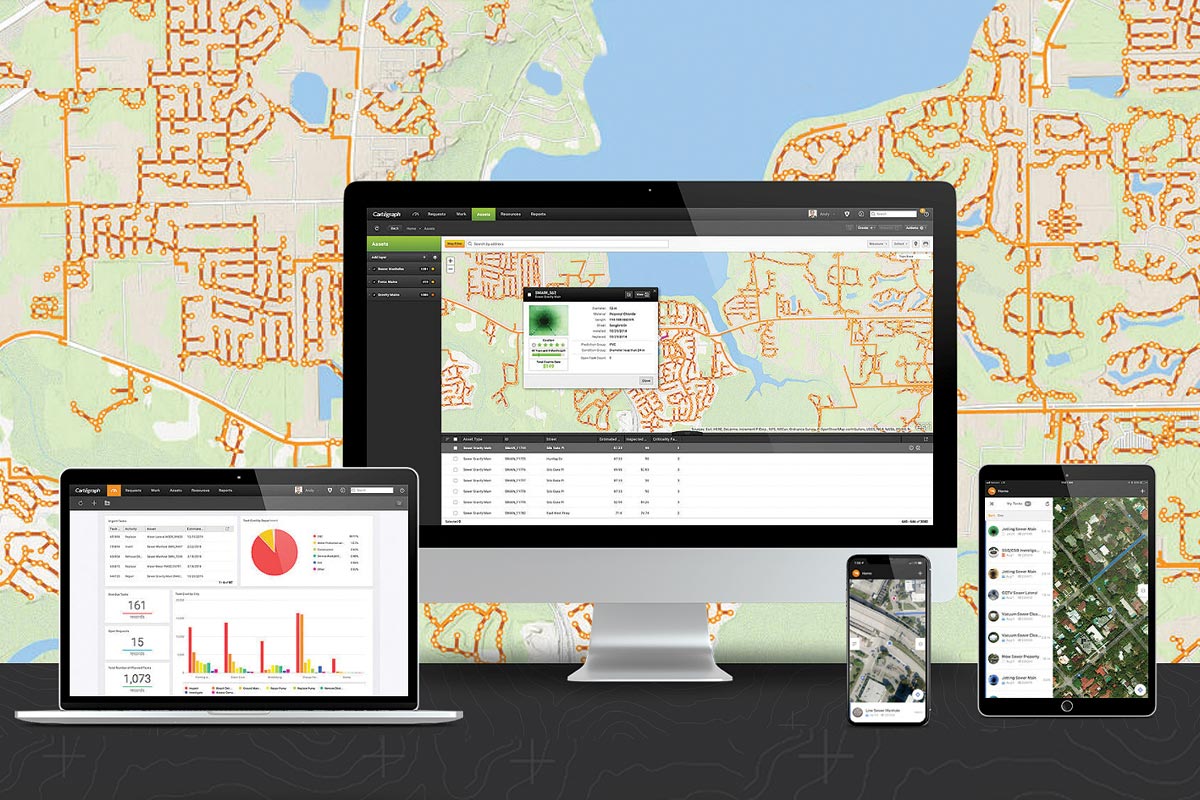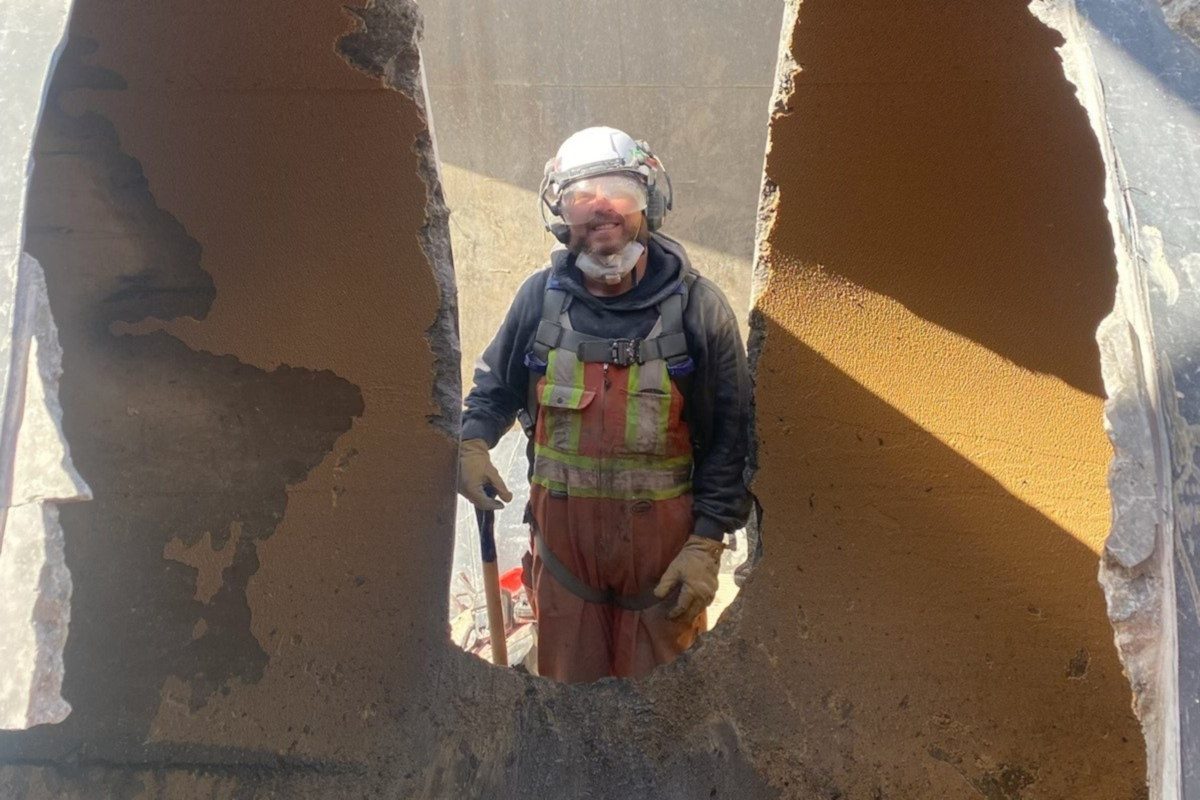
Zoom Camera Technology Improves Pipeline Asset Management Programs
Any sanitary sewer system owner knows that creating an assessment, cleaning and repair program is of utmost importance. But there is no possible way the owner can cover their entire length of the system year after year. What are they to do?
In many cases the owner would purchase a CCTV camera truck and a sewer cleaning truck — or hire a contractor with said equipment — and create a multi-year program to tackle the project. But, by just purchasing a CCTV camera truck, they are limiting the program from the get-go. There is a way to expedite the program and, in the end, save ratepayers money and that is via zoom camera technology.
RELATED: From Flashlights to Big Data: The Rapid Evolution of Manhole Inspection Technology

Zoom cameras affixed to tripods can be deployed and operated by a one-man crew. Here the Envirosight Quickview airHD is used to assess a pipe.
“In the majority of cases, where a municipality opts to employ zoom camera inspections, the data gathered will be used to drive their flushing program and then their CCTV programs,” says Don Gunn, president of Sudbury, Ontario, Canada-based CTZoom Technologies. “A key benefit of the zoom camera approach is that the municipality only flushes lines that require cleaning and can focus their CCTV program dollars on sewers that clearly are defective from the zoom camera results.”
While it is true that most CCTV crawler cameras are equipped with zoom technology, the equipment referred to in this article is of the pole-mounted variety. These easily transportable models are quickly deployed at the manhole and not only assess the manhole structure but also the pipelines, up to 400 ft in either direction of the manhole. Some of the cameras available in this space include the CTZoom PortaZoom, CUES QZ3, Envirosight Quickview airHD and Trio-Vision Xplorer.
According to Pierre Mikhail, CUES manhole inspection division director, the distance is dependent on the amount of light, straightness and type of the pipe. Other hindrances to inspection include debris, depth of water, steam and the presence of gas, as these cameras are not intrinsically safe.
RELATED: Going Deep, Going Long…With One Cable
He further explains that a 30- or 48-in. pipe, it’s possible to see in the 200 to 400 ft range. When an operator gets into the 6- and 8-in. pipes it’s about 60 to 70 ft on each side of the manhole. In PVC, for example, which is more reflective and remains generally straight when laid in the ground that distance is attainable. In clay pipe of the same size, which is darker and deviates more off the straight line as settlement occurs, the distances can be 20 to 40 ft from the manhole.
“We have put together case studies that prove, even if they are seeing 20 ft from the manhole, that is where the majority of issues they are looking for with a zoom camera become clear,” Mikhail says. “Even if we limit ourselves to 20 to 40 ft, you would get enough information to put together a zoom camera program and a long-term CCTV program.”
Using this technology is akin to triage procedures in an emergency room. With data in hand, the asset owner can tackle all of their PACP Grade 5 pipes first – the pipe has failed or will likely fail within five years – and work their way backward.
Asset owners who use the zoom camera technology in conjunction with in-depth CCTV reporting can, on average, reduce their costs by 34 percent and achieve a 17 percent increase in productivity, according to Jake Wells, director of marketing at Envirosight.
According to Gunn, an average crew can produce 25 to 30 manhole inspections per shift and an associated 1.86 miles of pipe survey length in a day. And the accuracy of this equipment is on par with CCTV crawler cameras.
RELATED: Zoom Camera Technology Aids in Development of Long-Term Asset Management Initiatives
Because these cameras are smaller, and more lightweight, than crawler cameras, the equipment is easily deployed by one worker. Systems are operated via joystick, keyboard controller or, in the case of the airHD, and the QZ3 via a tablet. Common setup for this equipment is via a mast on the back of a truck so the operator can deploy directly over the manhole. In difficult-to-access areas the cameras can be deployed from a tripod.
“Once it’s in position, you don’t want to rely on handheld operation—at high zoom, the slightest movement can completely change your view. Be sure to look for a freestanding design. Also, you’ll want to be able to adjust the camera remotely once it’s in place — fine-tuning camera height and tilt are key to making sure you have a good centerline view,” Wells says. “Wi-Fi operation makes deployment especially quick, plus the absence of wires around the manhole eliminates a tripping hazard.”
Wells comments tackle the stability and attaining a clear shot, but there are other things a buyer should consider. Mikhail says that a camera purchased today should feature LED lights, video that records in 1080p HD and at least 300:1 magnification. “The better your equipment is at lighting the pipe and recording the pipe, the better you will see the defects,” Mikhail stresses.
Tom Schmandt, president of Trio-Vision, offers these additional suggestions. Take the equipment for a real-world field test on your own pipelines and not in a controlled environment. The manufacturer should also offer operator training, ongoing warranty, maintenance, support and ongoing product development.
“I think the zoom cameras, if applied correctly to look at a whole system in advance of the CCTV, an owner can schedule where they want the slower and more in-depth CCTV cameras to go so they are, at least at the beginning of a five- or 10-year plan they are getting rid of all of the emergencies that are out of sight and out of mind,” Mikhail says. “By getting those out of the way first, they have a lot more peace of mind as they deal with the other pipelines in the system that don’t have emergencies. They also avoid surprise that way, as well.”




